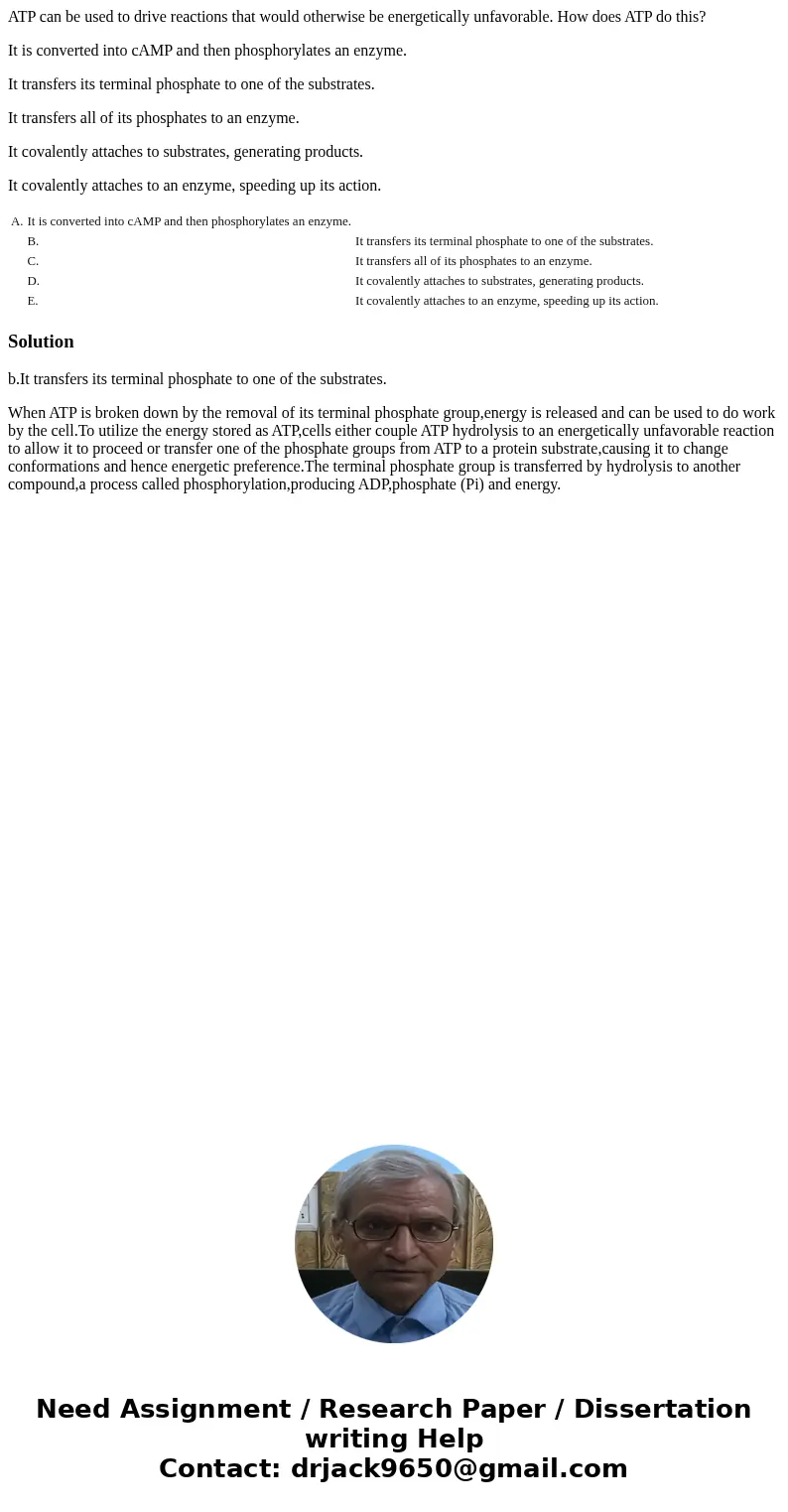ATP can be used to drive reactions that would otherwise be e
ATP can be used to drive reactions that would otherwise be energetically unfavorable. How does ATP do this?
It is converted into cAMP and then phosphorylates an enzyme.
It transfers its terminal phosphate to one of the substrates.
It transfers all of its phosphates to an enzyme.
It covalently attaches to substrates, generating products.
It covalently attaches to an enzyme, speeding up its action.
| A. | It is converted into cAMP and then phosphorylates an enzyme. | |
| B. |
It transfers its terminal phosphate to one of the substrates.
| |
| C. | It transfers all of its phosphates to an enzyme. | |
| D. | It covalently attaches to substrates, generating products. | |
| E. | It covalently attaches to an enzyme, speeding up its action. |
Solution
b.It transfers its terminal phosphate to one of the substrates.
When ATP is broken down by the removal of its terminal phosphate group,energy is released and can be used to do work by the cell.To utilize the energy stored as ATP,cells either couple ATP hydrolysis to an energetically unfavorable reaction to allow it to proceed or transfer one of the phosphate groups from ATP to a protein substrate,causing it to change conformations and hence energetic preference.The terminal phosphate group is transferred by hydrolysis to another compound,a process called phosphorylation,producing ADP,phosphate (Pi) and energy.

 Homework Sourse
Homework Sourse